Rob Fraboni & The Origins of RealFeel
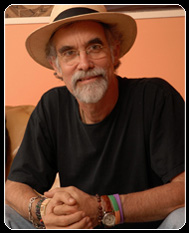 MAMARONECK, NY: “I got really lucky,” Rob Fraboni admits, “and didn’t have to do a lot of stuff that a lot of people had to do coming up. I had a lot of electronics experience and started out as a musician, so I had a lot going for me in that respect. But I got really lucky: most everything I got to do turned out to be of some significance.”
MAMARONECK, NY: “I got really lucky,” Rob Fraboni admits, “and didn’t have to do a lot of stuff that a lot of people had to do coming up. I had a lot of electronics experience and started out as a musician, so I had a lot going for me in that respect. But I got really lucky: most everything I got to do turned out to be of some significance.”
Such an admission could fairly be called an understatement.
With a combination of talent and timing, Fraboni — producer, engineer, onetime label executive and, most recently, proprietor of Real Mastering in Mamaroneck, 20 miles from Midtown — has indeed helped to birth of an extraordinary number of momentous recordings.
Concurrent with Real Mastering’s launch is the development of his proprietary RealFeel software (see below). Given the wealth of classic artists among his discography, this project is an apt metaphor for a brilliant career: RealFeel, he explains, “turns digital back into analog.”
THE RECORD PLANT TO THE VILLAGE & BEYOND: THE ROAD TO REAL
It’s hard to imagine today, but there was a time when New York City had not only telephone booths, but telephone books within them. “I just went to the phone booth,” the Southern California native recalls, “and called the first three studios alphabetically. I’d just moved here, and the second place I called was A-1, [Atlantic Records founder] Herb Abramson’s place. He said ‘Come talk to me,’ and hired me right there. I started the next day. And when I took an Institute for Audio Research class, Dennis Ferrante was in the class and he worked at the Record Plant [in Times Square]. He suggested applying at the Record Plant.”
He did, and was hired. “Jack Adams befriended me and we became very close friends,” Fraboni recalls. “Roy Cicala was the chief engineer. There was Jimmy Iovine, Jay Messina, Shelly Yakus, Jack Douglas and myself. Jack Douglas graduated from second engineer to engineer about three months after I started. Allen Ginsburg came in to do a record the first or second week I worked there, and John Lennon and Bob Dylan were there, which was amazing. At my age!”
That stint at Record Plant represents the only time in his career that he served as an assistant engineer (he concurrently held a second gig at Advantage Sound). On a visit home to southern California, Fraboni went to The Village in West L.A. “When I was a kid, I used to hitchhike to Hollywood and go in the back door of Gold Star [Recording] and watch sessions,” he recalls. “I got to see Phil Spector work, and all kinds of people. [Gold Star engineer] Doc Siegel befriended me and started inviting me to sessions, and we got to know each other.
“I had always wanted to work at the Village,” he continues. “All the other studios were in Hollywood, and the Village was just a cool place. I had seen an ad in Billboard and Doc’s picture was in there. I went by there and filled out an application. I went back to New York, and two weeks later they called: ‘If you’re willing to take the chief of maintenance job, you’ve got a job.’ I thought what the hell, and did it. Three months later, I was the chief engineer.”
A systems design class taken at the Institute for Audio Research was to come in handy. “They had bought a new Quad 8 console, and my job was to install it in Studio C. I had never done this before. I locked myself in a friend’s apartment for three days and nobody could find me, and did all the run sheets and the whole thing, and it worked perfectly. It was after that that Geordie [Hormel, late owner of the Village] made me the chief engineer.”
With George Augspurger, Fraboni then designed Studio B at the Village, where he worked on landmark recordings such as Planet Waves (Bob Dylan with the Band) and “Sail On Sailor” and the Holland album (the Beach Boys). He also worked on Goats Head Soup with the Rolling Stones, sparking a lasting friendship and working relationship with Keith Richards. These are but a few of the towering musical figures with whom he would work: Eric Clapton, Etta James, Joe Cocker and Bonnie Raitt are a few of the others. He also remastered Bob Marley’s Island catalog for CD release.
In the fall of 1995, Richards and Fraboni recorded the Wingless Angels album in Jamaica, on which the guitarist performs with Rastafarians of the Niyabinghi sect. “We had a limited amount of equipment,” Fraboni remembers.
“We only had five microphones, and I had to figure out how to make this thing work. That set me on this course to where, when we worked on [the Rolling Stones’] Bridges to Babylon, Keith and I had the intention to try to make a rock and roll record this way. That was too much of an intense situation with all these different producers and different stuff going on, and we didn’t get to do it. But we set up a studio at Keith’s house, and did recordings — the whole thing — with four microphones, which is fantastic.”
FRABONI’S REAL MASTERING WITH REALFEEL
Real Mastering employs a Pyramix-based DAW and a wealth of Daniel Weiss hardware — “everything he makes, pretty much,” says Fraboni.
“I’ve got a Pacific Microsonics HDCD encoder that I like very much.” On the analog side, the studio houses an tape machine from ATR Services, Inc. with ¼-, ½- and 1-inch capability; and a Neve-designed [Legendary Audio] Masterpiece 2-channel mastering unit. “I’m not really a fan of plug-ins,” Fraboni admits. “I prefer the Weiss stuff.” All wiring is by Requisite Audio Engineering.
Speakers are Mark Levinson’s Daniel Hertz M1s and Paradigm Studio 20s, powered by Daniel Hertz M5 amplification and a Steve Firlotte-designed Class A preamp. “When I started mixing on [the Studio 20s],” Fraboni confides, “I found that I’d go to mastering and wouldn’t need to do any EQ. I use those when I mix, and then as a reference in mastering.”
Described as a “cure” for digital sound, RealFeel software, Fraboni states, “reconnects the samples, and you have no spaces, no gaps, between them. Your subconscious recognizes it as analog, and it affects the feel of the music in a very positive way.
“It makes it feel like an analog recording — that’s more the thing than the sound,” he continues. “It does sound better, but on a sound level it’s very subtle. You can turn it up loud and it doesn’t hurt your ears, but it doesn’t hit you over the head. It’s the type of thing where, if you take a dozen CDs that have RealFeel on them and listen for a week and your subconscious gets used to it, and then put on a regular CD, then it becomes really noticeable.
“It’s the only solution I’ve found that makes music listenable to me again, because I’ve found it very difficult to listen to CDs. This fixes all that. It really feels like you’re listening to a vinyl record. The other great thing that happens [with RealFeel] is, even MP3 files feel better than a CD, which seems impossible, but it’s true.”
RealFeel is applied in mastering, but possibilities extend further: Fraboni has a personal setup that applies RealFeel to CD playback in real time, for example, and is working on additional utilizations. “But when you use it in mastering,” he adds, “you can really optimize things and get everything just right.” — Christopher Walsh







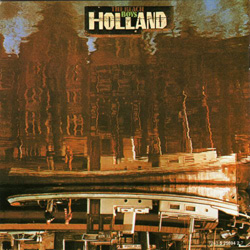
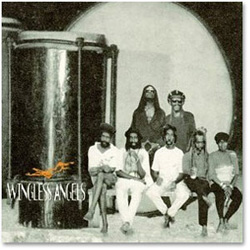
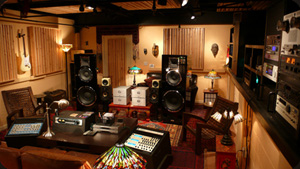
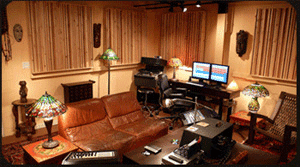
Zé Luis
May 27, 2010 at 5:18 pm (14 years ago)I just spoke with Roy Cicala, which is living in São Paulo-Brazil, and we were talking about Mr. Fraboni and his incredible accomplishments… Kudos for your piece!
Best,
Zé Luis
Zé Luis
May 27, 2010 at 10:18 am (14 years ago)I just spoke with Roy Cicala, which is living in São Paulo-Brazil, and we were talking about Mr. Fraboni and his incredible accomplishments… Kudos for your piece!
Best,
Zé Luis
carl carlyle
June 27, 2010 at 4:18 am (14 years ago)HI ROB:
My name is Carl Carlyle. I’m in L.A.. My producer is getting money to produce my musical. When the money comes in from the investors my producer and I would be honored to re-do the tracks of my musical with you in your studio. I worked many years ago with a singer named Pamela Fraboni in Hollywood. Pam recorded some of my songs. I believe she was connected to Gold Star with a recording engineer named Paul Ring who recorded my stuff back then. If it is possible to record my musical at Real Mastering, I would very much like Pam to do some vocals. That is if she is a relative of yours. Your studio looks great. Tom, my producer saw the photos and he agrees with me. I hope when the investment money comes in to be blessed to work with you. CARL CARLYLE 818-368-8815
carl carlyle
June 26, 2010 at 9:18 pm (14 years ago)HI ROB:
My name is Carl Carlyle. I’m in L.A.. My producer is getting money to produce my musical. When the money comes in from the investors my producer and I would be honored to re-do the tracks of my musical with you in your studio. I worked many years ago with a singer named Pamela Fraboni in Hollywood. Pam recorded some of my songs. I believe she was connected to Gold Star with a recording engineer named Paul Ring who recorded my stuff back then. If it is possible to record my musical at Real Mastering, I would very much like Pam to do some vocals. That is if she is a relative of yours. Your studio looks great. Tom, my producer saw the photos and he agrees with me. I hope when the investment money comes in to be blessed to work with you. CARL CARLYLE 818-368-8815
Dysfunctional Family Jazz Band
November 14, 2010 at 6:24 pm (14 years ago)It is an amazing process and Rob is a sound genius. Our record “Come Over” has Real Feel on it and it made an amazing difference. http://www.dfjbmusic.com
moonman
February 28, 2013 at 6:35 am (12 years ago)N.O.Moonman….I knew you would come up with something. Still got the hdcd you gave me ages ago, b4 re-fazin’ the Boiler Room.